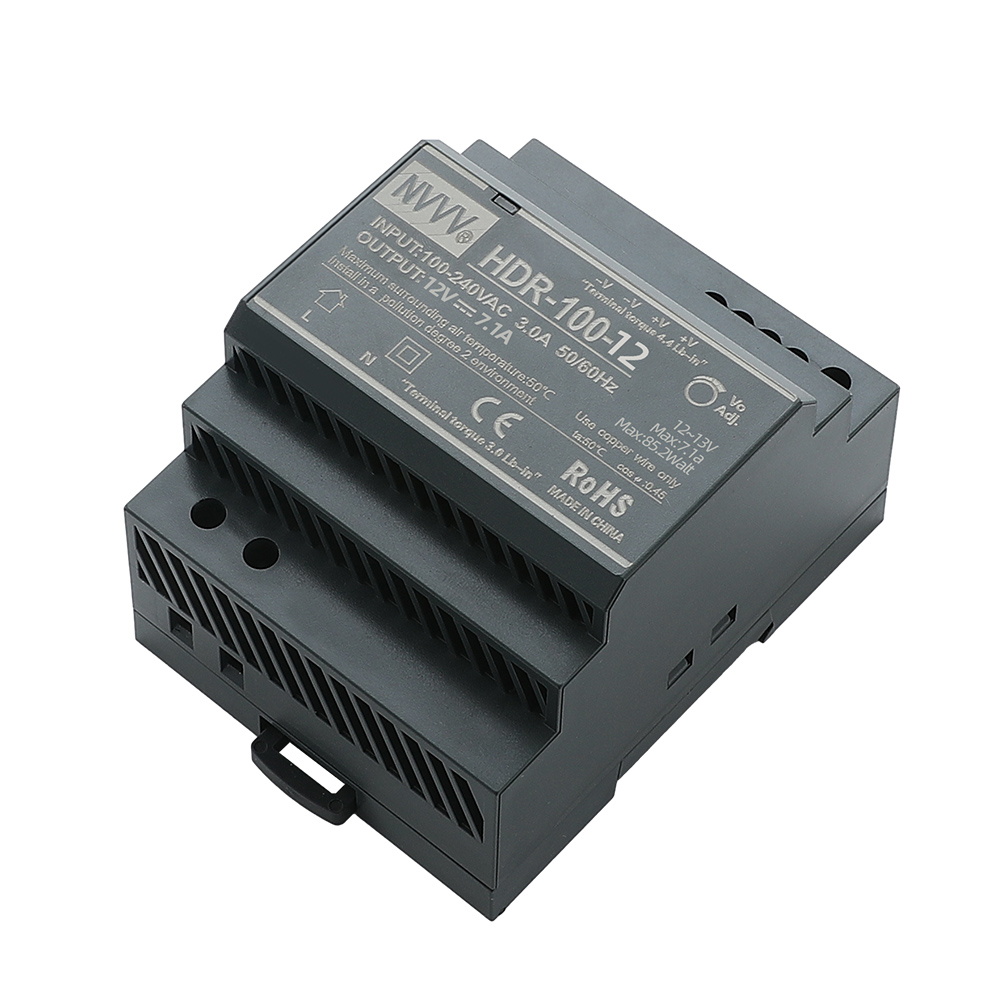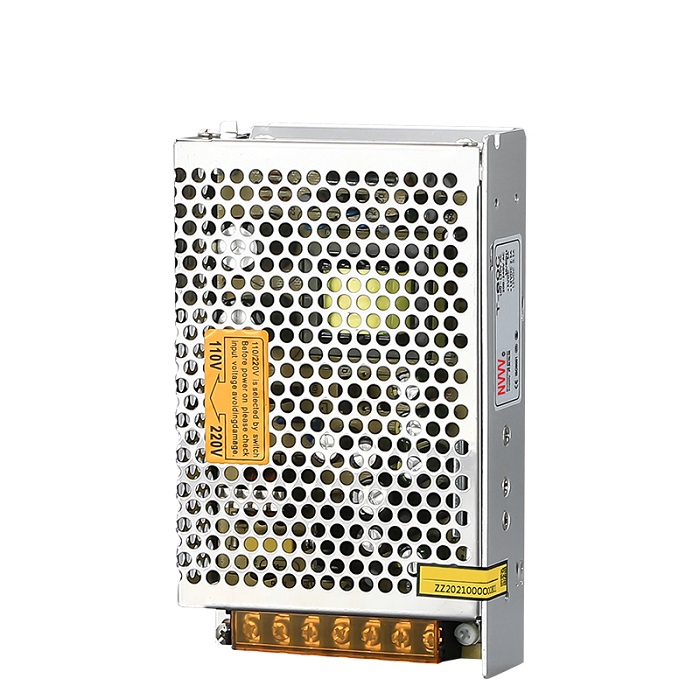What is the main advantage of using the SMPS over a traditional linear power supply?
With the continuous advancement of electronic technology, the types of power supplies are becoming increasingly rich. Among the many power supply options, Switch Mode Power Supply (SMPS) is widely used in various fields due to its high efficiency and small size. So, what are the significant advantages of switching power supplies compared to traditional linear power supplies? This article will give you an in-depth understanding of the core advantages of switching power supplies and help you better choose a suitable power supply.
Why are switching power supplies more efficient?
When discussing the differences between switching power supplies and linear power supplies, efficiency is undoubtedly one of the most significant factors. Switching power supplies control voltage and current through high-frequency switching operations, and their conversion efficiency can generally reach 80%-90%, while traditional linear power supplies can often only achieve 50%-60% efficiency. This difference in efficiency stems primarily from the way they work.
High frequency switching operation of switching power supply
A switching power supply regulates the output voltage by quickly switching between "on" and "off" states. This "on-off" operation means less heat is lost during energy transfer. Since the current transfers power when it is "on" and consumes almost no power when it is "off", the switching power supply can more efficiently convert input electrical energy into output electrical energy.
In contrast, a linear power supply obtains the desired output voltage by regulating the input voltage and allowing a portion of the voltage to be converted into heat. Since electrical energy is directly converted into heat energy, a large amount of energy is wasted. Especially when the voltage difference is large, the heat generated by the linear power supply will increase significantly, which not only reduces the conversion efficiency, but also puts forward higher requirements for heat dissipation.
Impact of energy efficiency on applications
In some equipment with high efficiency requirements, such as data centers, communication base stations, etc., the efficiency of the power supply directly affects the energy consumption level and operating cost of the equipment. An efficient switching power supply can reduce power consumption and heat dissipation costs while ensuring output power, which is crucial for long-term operation of the equipment.
For example, assume that a system consumes 500W of power. If a linear power supply with 60% efficiency is used for power supply, the required input power is 833W, while a switching power supply with 90% efficiency only requires about 555W input power. Obviously, switching power supply has huge advantages in reducing power loss.
Why is the switching power supply smaller?
Space is an important consideration in many applications, especially in consumer electronics and industrial equipment where compact designs are increasingly required. Compared with linear power supplies, switching power supplies tend to be smaller in size because their high-frequency conversion design allows the internal components of the power supply to be smaller.
Effect of high frequency on volume
The core of switching power supplies lies in high-frequency switching operations. Such high-frequency design means that magnetic components such as transformers and inductors can be smaller in size. Traditional linear power supplies operate at a lower frequency, usually around 50-60Hz, so a larger transformer is required to provide sufficient power; while switching power supplies usually operate at tens to hundreds of kHz, which makes the magnetic components bulky be significantly reduced.
For example, if the operating frequency of a switching power supply is 100kHz, compared with a 50Hz linear power supply, the size of its transformer can be reduced to 1/10 or even smaller. This miniaturized design not only meets the needs of portable devices, but also brings more possibilities to the layout of the internal structure of the device.
Application potential brought by volume advantage
In many portable devices and embedded systems, compact switching power supplies help improve the overall design freedom of the product. For example, in consumer electronic devices such as mobile phones and laptops, the small size of switching power supplies can significantly reduce the weight of the device and improve user experience. In addition, in industrial and communication equipment, small power supplies help reduce the space occupied by cabinets and improve the integration of equipment.
In summary, the high-frequency design allows the switching power supply to greatly reduce the size while ensuring power, and is suitable for a variety of application scenarios with limited space.
What are the advantages of switching power supply in terms of heat dissipation and stability?
The heat dissipation and stability of the power supply equipment directly affect the safety and life of the system. Compared with traditional linear power supplies, switching power supplies have natural advantages in heat dissipation, and their stability has also been widely recognized.
Heat dissipation advantages: lower energy loss and reduced heat generation
Due to its high working efficiency, the switching mode power supply has a lower ratio of converting electrical energy into heat energy, which means it generates less heat during operation. Traditional linear power supplies have very high heat dissipation requirements due to large energy losses, especially under high voltage differential conditions. Linear power supplies convert part of the voltage into heat through linear regulation, so they usually require a larger heat sink to help with cooling.
In switching power supplies, due to the high power conversion efficiency, the size of the radiator can be reduced accordingly, and the radiator can even be completely eliminated in some small application scenarios. This design not only simplifies the power supply structure, but also reduces performance fluctuations caused by heat, which is beneficial to the long-term stable operation of the equipment.
Stability advantages: adapt to power grid fluctuations and improve output quality
Switching power supplies usually have voltage stabilizing and filtering circuits and have strong adaptability to input voltage fluctuations. Especially in areas with unstable grid voltage, switching power supplies can effectively convert fluctuating input voltages into stable output voltages, thereby protecting downstream equipment. In comparison, linear power supplies have poor adaptability to voltage fluctuations and are prone to output fluctuations due to input instability, or even equipment failure.
In situations such as communication equipment and medical equipment that require stability, the voltage stabilization capability of switching power supplies is particularly important. For example, in a communication base station, if the power supply cannot be supplied stably, it will directly affect the stability of signal transmission. Switching power supplies can not only provide stable power output, but also reduce the impact of power grid fluctuations on equipment and improve the overall stability of the system.
What are the advantages of switching power supply in terms of application range and adaptability?
The adaptability of switching power supplies is widely reflected in many industries and fields, from household appliances to industrial automation, medical equipment, etc. The wide application of switching power supplies benefits from its flexibility and performance advantages.
Wide applicable voltage range
Due to the use of high-frequency switching technology, switched mode power supplies are usually able to adapt to a wider voltage input range. Whether it is a 110V American power grid or a 220V European power grid, the switching power supply can achieve seamless conversion through internal circuit design. This makes switching power supplies widely used around the world to meet the power supply needs of different countries and regions.
In comparison, linear power supplies are relatively limited in voltage adaptability. Most linear power supplies are designed for fixed voltage input. If the voltage needs to be converted, additional transformers or conversion equipment need to be installed, which not only increases the cost but also increases the complexity of the equipment.
Applicable to a wide range of environments
Not only can switching power supplies adapt to different voltage ranges, they are also designed to adapt to different environmental conditions. Many switching power supplies are waterproof and dustproof and can work normally in extreme environments such as high temperature and high humidity. For example, industrial sites and outdoor equipment often need to withstand temperature differences and humidity changes. The high stability of switching power supplies makes them perform well in these environments.
Versatility
Switching power supplies can also achieve various functions such as power regulation, overcurrent protection, and overheating protection by adding different functional modules. Especially in modern intelligent equipment and automation systems, the demand for intelligent power supplies is getting higher and higher. The flexible design of switching power supplies can meet different functional requirements and realize diversified applications from simple power supply to intelligent control.
For example, in modern smart home systems, the switching power supply can be linked with the intelligent control system to automatically adjust the output power according to the power requirements of the device, thereby achieving energy saving effects. This kind of versatility cannot be achieved by traditional linear power supplies, so switching power supplies have gradually become the first choice for all types of smart devices.
Conclusion
To sum up, switching power supplies (SMPS) have significant advantages over traditional linear power supplies in terms of efficiency, volume, heat dissipation, stability and adaptability. These characteristics make it perform well in various application scenarios. It is not only suitable for household appliances, but also widely used in industrial equipment, communication facilities, medical equipment and other fields. With the continuous advancement of technology, the application range of switching power supplies will further expand and gradually replace traditional linear power supplies and become the mainstream choice in modern power systems.










